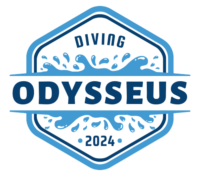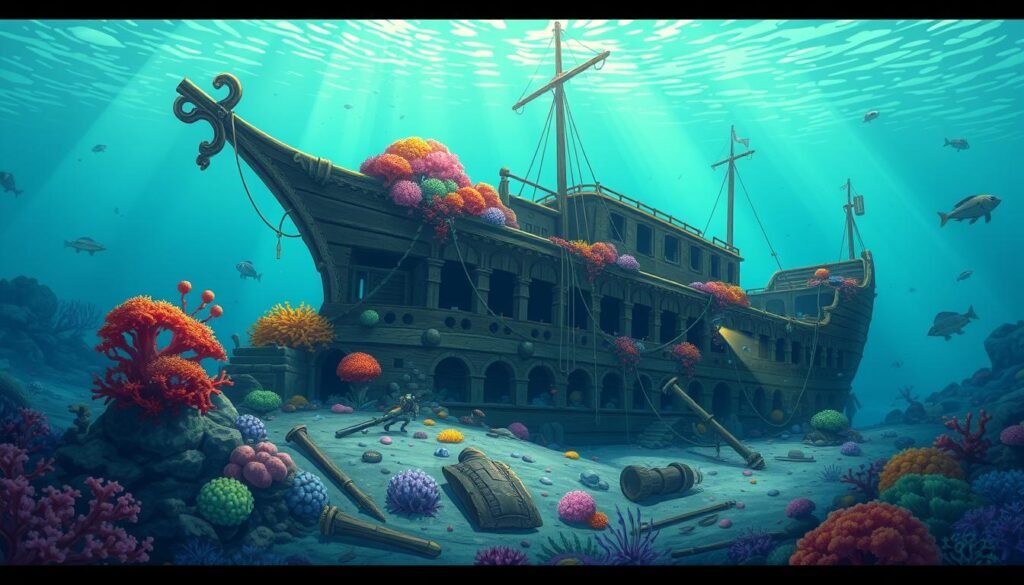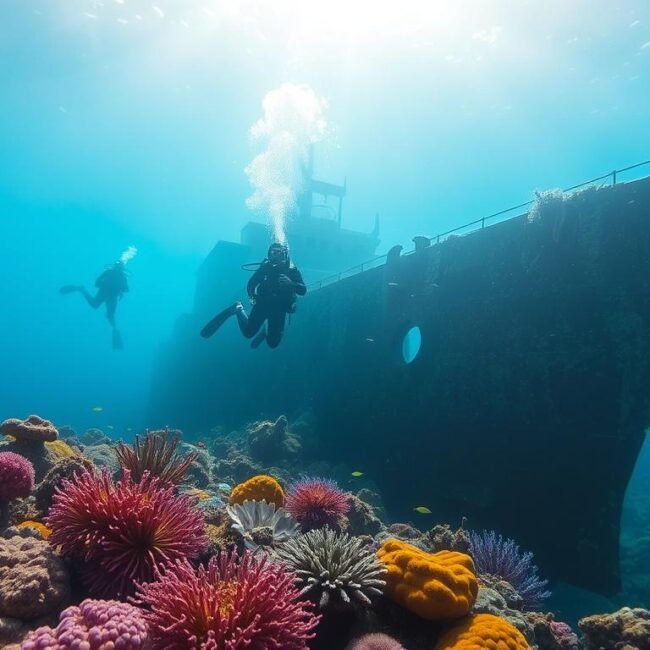Did you know there are about 3 million shipwrecks in the world’s oceans? Many are still hidden beneath the waves. As we explore wreck diving’s history, we’ll journey through time. We’ll see how wreck diving helps us understand our maritime past.
From ancient times to today, wreck diving’s history is rich and complex. It shows us why we must save historical shipwrecks. It also highlights the role of diving gear in these efforts.
As we dive into wreck diving, we’ll talk about its role in marine conservation. We’ll see how to balance exploring with saving these treasures. Thanks to modern diving equipment, wreck diving is now a favorite activity. It lets us uncover our maritime heritage and the secrets of shipwrecks.
Key Takeaways
- Wreck diving history is a complex and fascinating topic that spans thousands of years.
- There are an estimated 3 million shipwrecks scattered across the world’s oceans.
- Wreck diving plays a crucial role in promoting marine conservation and preserving historical shipwrecks.
- Advanced diving equipment has made wreck diving more accessible and safer.
- Wreck diving helps us learn more about our maritime heritage and the shipwrecks that lie beneath the surface.
- Preserving historical wrecks is essential for understanding our maritime past and promoting cultural heritage.
The Origins of Wreck Diving History
Exploring the history of wreck diving is fascinating. It shows how ancient civilizations salvaged valuable items from shipwrecks. This early interest in wrecks helped develop diving equipment, allowing us to dive deeper and learn more.
Wreck exploration has grown a lot over time. New diving equipment has been key to this growth. Now, we can dive deeper and stay longer, uncovering more of our maritime history.
Some early examples of wreck exploration include:
- Ancient Greek and Roman salvage operations, which involved recovering valuable materials from shipwrecks
- The development of early diving equipment, such as diving bells and helmets
- The first documented wreck explorations, which date back to the 16th century
These early efforts have led to today’s wreck diving. It combines old salvage methods with new diving tech. As we keep exploring wrecks, we see why it’s vital to protect our maritime history for the future.
| Time Period | Notable Wreck Exploration Events |
|---|---|
| Ancient Civilizations | Ancient Greek and Roman salvage operations |
| 16th Century | First documented wreck explorations |
| Modern Era | Advances in diving equipment development and wreck preservation techniques |
Evolution of Wreck Diving Technology
Exploring wreck diving, I’m amazed by how fast technology has grown. New diving gear has made underwater adventures safer and more successful. Now, with scuba gear, underwater cameras, and ROVs, diving into wrecks is easier and more precise.
Keeping up with the latest tech is crucial. These advancements make wreck diving better and help us learn more about the ocean’s past. Some major tech improvements include:
- Improved diving gear, like rebreathers and full-face masks, makes diving safer and more comfortable.
- Advanced underwater cameras let us capture high-quality images of wrecks and marine life.
- Remotely operated vehicles (ROVs) allow us to explore wrecks in detail and with less risk.
As wreck diving tech keeps evolving, it’s vital for divers to stay updated. This ensures our underwater adventures are safe, responsible, and respectful of the ocean’s wonders.
Thanks to advanced wreck diving tech, we can learn more about the ocean’s history and why it’s so important to protect it. By embracing these innovations and continuing to explore, we can uncover the secrets of the deep.
Notable Shipwrecks That Shaped Modern Wreck Diving
Exploring wreck diving, I find myself drawn to the tales of famous shipwrecks. These wrecks have not only uncovered our maritime past but also opened doors for exploration and conservation. Iconic wrecks like the SS Andrea Doria draw divers from everywhere.
The SS Andrea Doria is a legendary shipwreck that has greatly influenced wreck diving. The HMS Titanic, too, has significantly shaped our view of maritime history. Its exploration has given us a deep look into the lives of those who sailed on it. World War II wrecks in the Pacific are also hotspots for wreck diving, offering a peek into a tumultuous era.
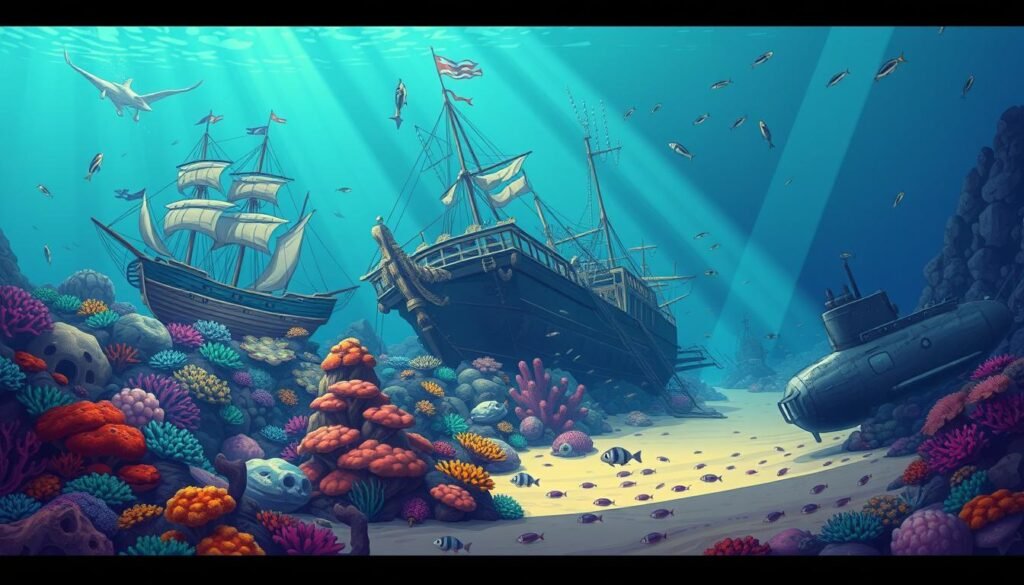
- Historical significance: Many of these wrecks have played a significant role in shaping world history, and their discovery has provided valuable insights into the past.
- Technical challenges: Wreck diving often requires specialized skills and equipment, and the exploration of these shipwrecks has driven innovation in the field.
- Conservation efforts: The discovery of these wrecks has also highlighted the importance of preserving historical artifacts and promoting marine conservation.
In conclusion, wrecks like the SS Andrea Doria, HMS Titanic, and World War II wrecks have greatly influenced wreck diving. They offer a unique look into the past and push the field forward. As we continue to explore and learn from these wrecks, we are reminded of the need to protect our maritime heritage and support conservation efforts.
Essential Skills and Training for Wreck Diving
Exploring wreck diving shows me how vital it is to learn key skills. These skills come from diving training, which boosts my diving fun and helps marine conservation. To dive wrecks well, I need to take courses on navigation, emergency actions, and diving responsibly.
Some key aspects of wreck diving training include:
- Getting diving certification from a trusted group
- Finishing wreck diving specialty courses to learn safe diving and marine conservation
- Keeping up with the newest diving equipment and tech
Learning these skills and knowledge ensures a safe and fun wreck diving adventure. It also helps marine conservation. As I dive more, I see how important it is to dive responsibly and protect our ocean.
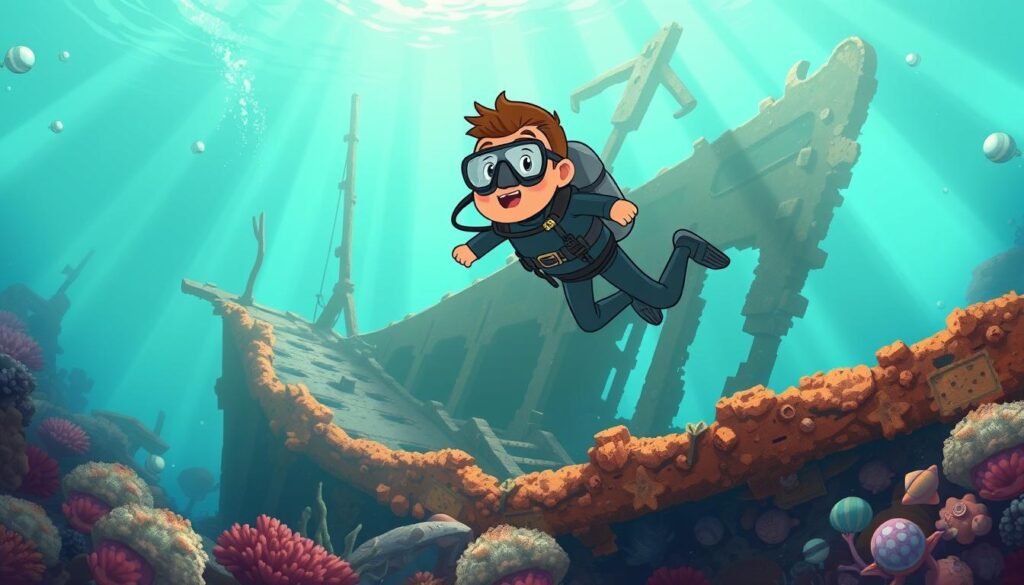
My wreck diving training has taught me a lot about marine conservation. It shows how wreck diving can affect the environment. By diving responsibly and supporting marine conservation, I help keep our ocean beautiful for others to enjoy.
Understanding Maritime Law and Wreck Preservation
Exploring wreck diving shows me how vital maritime law and wreck preservation are. Maritime law helps protect historical sites by setting rules. It’s especially important in international waters, where wrecks are found.
Keeping wrecks safe is a big challenge. It needs a mix of respecting history and modern conservation. Governments, groups, and individuals must work together. They aim to keep these underwater treasures safe.
- Historical protection acts, which safeguard wrecks from damage or destruction
- Artifact recovery guidelines, which regulate the removal and preservation of historical artifacts
- International cooperation, which facilitates the sharing of knowledge and best practices in wreck preservation
By knowing and following maritime law, we can protect these sites for the future. 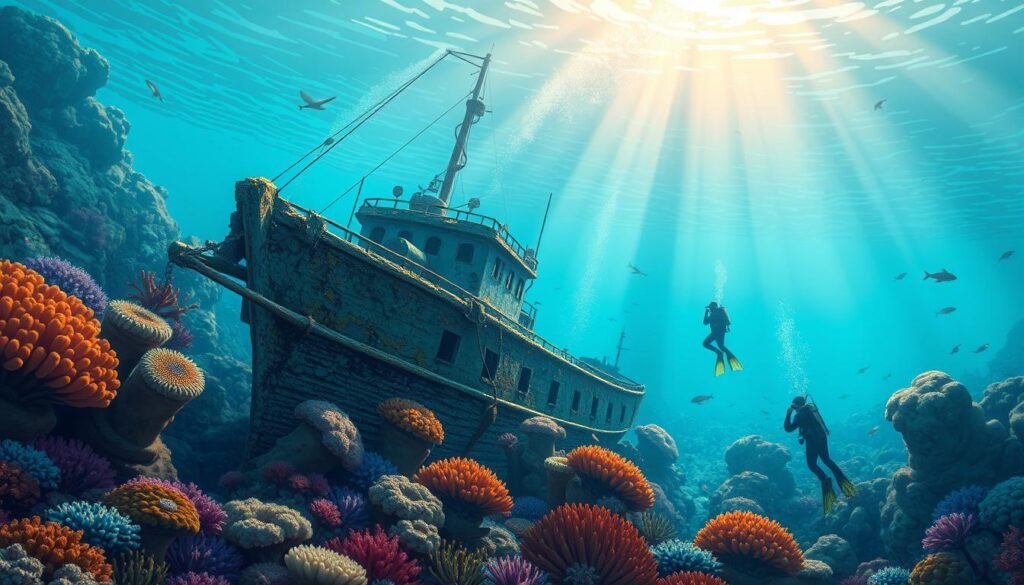
International Waters Regulations
Rules for international waters are key in maritime law. They control how wrecks are explored and excavated worldwide. These rules stop looting and ensure wrecks are treated with respect.
Historical Protection Acts
Acts for historical protection are crucial. They protect wrecks from harm or loss. These acts create a framework for preserving and protecting historical sites.
Artifact Recovery Guidelines
Guidelines for artifact recovery are important. They control how historical items are taken and kept from wrecks. These rules help us handle and preserve artifacts, letting us learn from and value their history.
Safety Considerations in Modern Wreck Diving
Exploring wreck diving, I see how vital safety is. Diving can be full of surprises, and we must be ready for emergencies. The right gear, navigation, and communication are key to avoiding accidents and handling emergencies.
Important wreck diving safety tips include:
- Regular equipment maintenance
- Thorough dive planning and briefing
- Effective communication among team members
Keeping up with the latest safety tips is crucial. We need to know about dangers like strong currents, poor visibility, and marine life. With the right preparation, divers can have a safe and enjoyable wreck diving adventure.
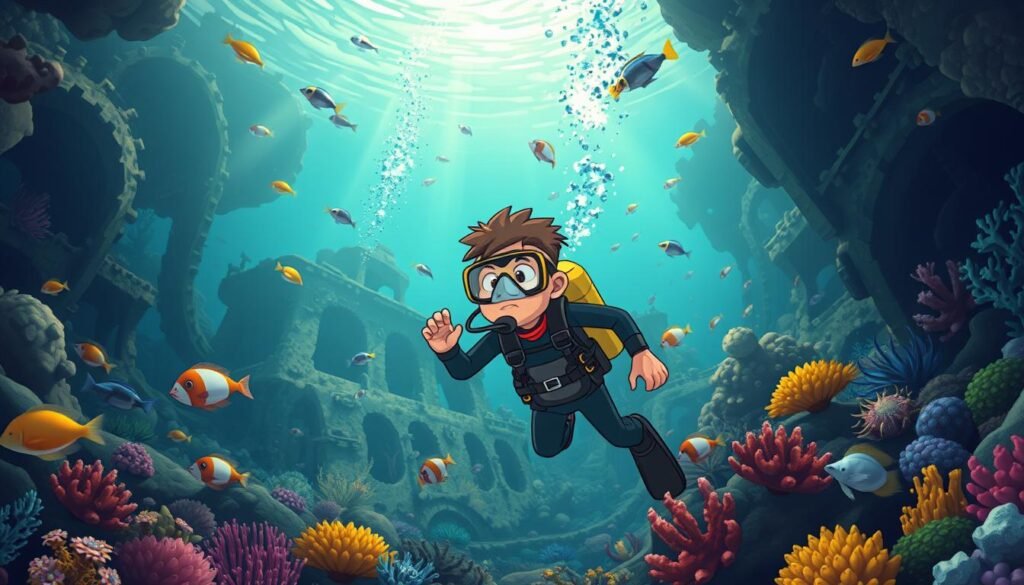
Emergency plans, like rescue steps and first aid kits, must always be ready. If an emergency happens, divers should stay calm and follow the plan. By focusing on safety and being ready for dangers, divers can explore wreck diving with confidence.
Environmental Impact and Conservation Efforts
Exploring wreck diving shows us how it affects marine life. Coral growth on wrecks is both good and bad. It helps marine life but also shows how human actions can harm these ecosystems.
Wreck diving can harm marine life habitats. Divers might damage coral reefs or disturb marine life. It’s crucial to dive responsibly, avoiding reef contact and not taking marine life or artifacts.
Coral Growth on Wrecks
Coral growth on wrecks is amazing, with colorful coral and marine life thriving. But, it also shows the harm from pollution and climate change. These issues can damage coral and upset the marine ecosystem.
Marine Life Habitats
Marine life habitats are vital for many species. Wreck diving can help protect these habitats. It raises awareness about the need to preserve marine ecosystems and the effects of human actions.
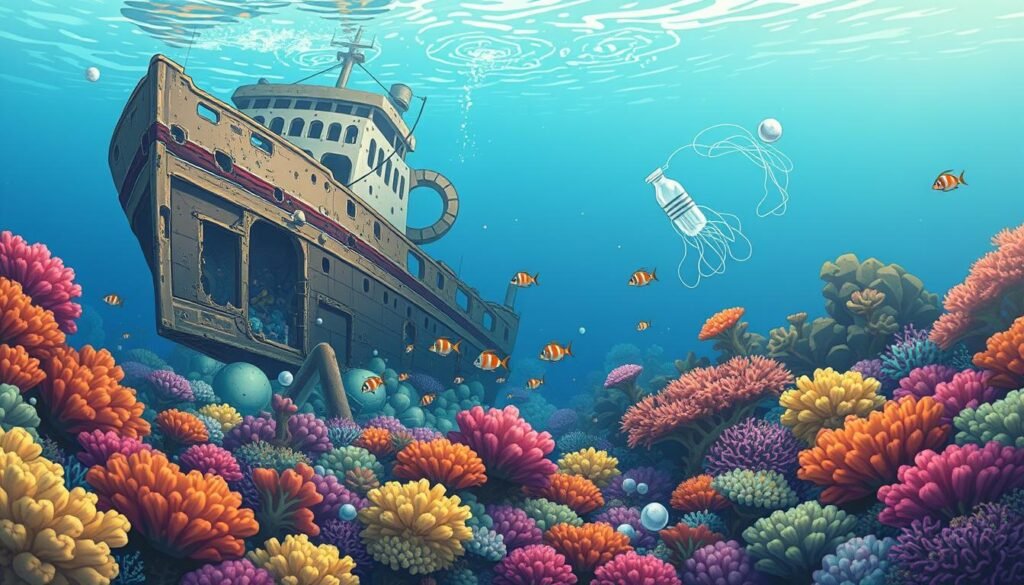
Preservation Techniques
Preserving marine life habitats is key. This includes creating marine protected areas, using sustainable fishing, and diving responsibly. These steps help protect marine ecosystems.
By using these preservation techniques, we can lessen wreck diving’s environmental impact. This is crucial for keeping marine life habitats healthy. It helps ensure our oceans stay beautiful and diverse for the future.
Famous Wreck Diving Locations Around the World
I’ve explored some of the world’s most famous wreck diving spots. From the Caribbean to the Mediterranean, each place offers a unique dive. You get to see history up close.
Some of the most notable famous wreck diving locations include:
- Caribbean wreck sites, such as the SS Andrea Doria and the HMS Rhone
- Mediterranean historical wrecks, such as the Uluburun shipwreck and the Antikythera shipwreck
- Pacific Ocean military wrecks, such as the USS Arizona and the IJN Musashi
These spots offer different diving experiences. You can dive shallow reefs or explore deep-sea wrecks. It’s a chance to see history and marine life.
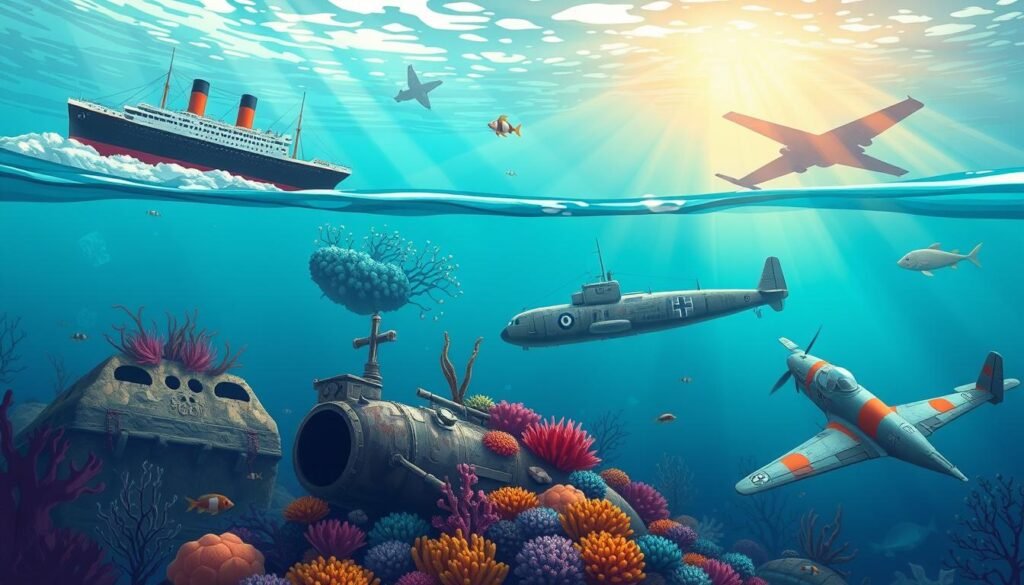
These wrecks are not just historical sites. They also support a wide range of marine life. This makes them a favorite among divers and marine biologists.
| Location | Wreck Name | Depth |
|---|---|---|
| Caribbean | SS Andrea Doria | 240 feet |
| Mediterranean | Uluburun shipwreck | 160 feet |
| Pacific Ocean | USS Arizona | 40 feet |
In summary, famous wreck diving locations worldwide are exciting for divers. They offer a peek into history and marine life.
Conclusion: The Future of Wreck Diving Exploration
The world of wreck diving is full of promise for the future. New tech, like advanced diving gear and underwater cameras, is making it easier to explore wrecks. I think the future of wreck diving will focus more on marine conservation and diving responsibly. This way, we can keep these historical sites and their delicate ecosystems safe for future generations.
Divers will be key in protecting wreck diving sites and promoting wreck diving exploration that’s good for the planet. Working together with marine scientists and lawmakers, we can create rules that protect these underwater treasures. At the same time, we’ll allow for important research and exploration.
The future of wreck diving is looking bright. With new tech, divers will be able to reach wrecks that were once off-limits. This will give us new insights into our maritime history. By being careful and innovative, the wreck diving community can keep these underwater stories alive and inspiring for many years.
